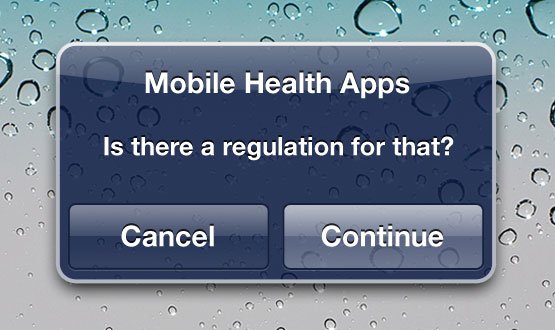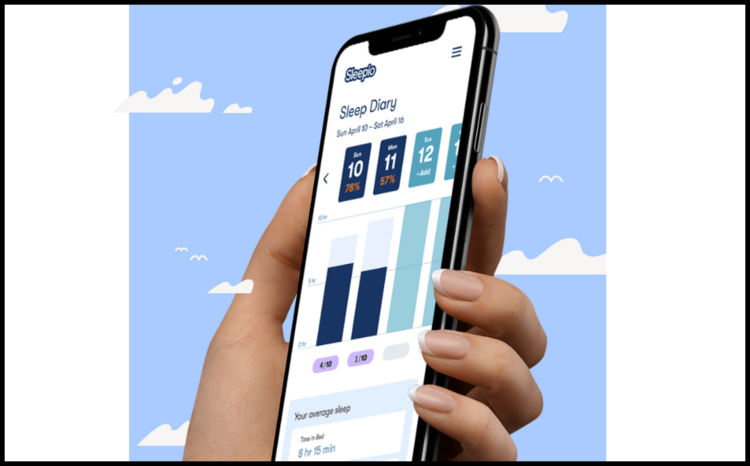Is there a regulation for that?
- 23 January 2012

Mobile health apps were recently described as “the single-biggest digital channel since the 90s and the web” by business and research consultancy Frost and Sullivan.
The claim by the firm’s senior industry analyst, Zachary Bujnoch, was backed up by astounding figures for the growth of the mobile health market – last year the revenues made by the development of mobile apps reached £13.2 billion in the US.
Bujnoch says the market has consistently outpaced forecasts for its growth and revenue; and there is no reason to think they will not continue to do so.
“mHealth apps will continue on a steep growth curve as increasingly sophisticated mobile technologies and relationship-management tools disrupt the market,” he says.
The FDA leads the way
Apps are certainly flooding the market. Everything seems to be available, from daily calorie intake calculators to apps that give health advice based on inputted symptoms, to sophisticated programmes that help doctors calculate drug dosages and treatment regimes.
However, the sheer number of apps available, and the range of issues they address, has led some to wonder whether there shouldn’t be some check on production, quality and use.
In July last year, the US Food and Drug Administration released draft guidance for the industry on how it is planning to regulate such applications, and is now reviewing feedback.
The guidance starts at the beginning, with what the FDA considers to be a ‘mobile medical app’. It says it is concerned with extensions of an already classified medical device, such as a mobile device that helps to control the ‘parent’ device, or is used to view information coming from that device. This would include apps for viewing images from picture archiving and communication systems.
Mobile apps that transform a device into one with a medical purpose by using an attachment would also come with the FDA’s remit. This would include blood glucose strips that connect to a mobile device so it becomes a blood glucose meter.
The FDA also considers mobile applications that use formulae or algorithms to make calculations based on raw data to be medical apps.
For the different classes of apps, it proposes to impose different degrees of control, ranging from relatively basic pre-market approval to full-on registration backed up by reporting of problems with mechanisms for getting problem apps out of circulation. App distributors would be expected to help with the latter.
More problems for the MHRA
The UK is not nearly so far ahead on its thinking. The responsibility for issuing similar guidance would fall on the Medicines and Healthcare Products Regulatory Agency (MHRA), which is the UK’s ‘competent authority’ for following through on the directives from the European Commission’s Medical Devices Directorate.
The EC directorate is ambiguous on what it defines as a medical device. It states that any instrument, apparatus, appliance, software, material or other article that is used to diagnose, prevent monitor, treat or alleviate disease is a medical device. Such a broad definition certainly includes mobile applications.
The MHRA told eHealth Insider it was working on establishing new guidance; but it indicated that its classification of mobile medical devices would be much narrower than the EC’s.
“It is not true to say that downloading an application claiming to have a medical purpose will automatically make an iPhone a medical device, because the iPhone has not itself been placed on the market for a medical purpose,” a spokesperson said.
The MHRA also said it thought the question of regulating software such as mobile applications was “extremely complex” and must be looked at on a case by case basis.
However, it indicated that a working group is due to issue its first revision early this year. In the meantime, it is up to software developers and distributors to decide whether they want to gain official accreditation for their apps.
CE Mark – one so far
Accreditation for devices gives manufacturers the ability to market them with CE Mark approval – meaning it complies with the requirements of the relevant EC directives.
Only one UK app developer has gone through the regulatory process of gaining the CE Mark; which has been awarded to the Mersey Burns Tool developed by doctors at the Mersey Regional Burns and Plastic Surgery Unit.
The app uses complex formulae to help doctors perform complex calculations about how much fluid should be given to a burns patient – a process which would have to have been conducted manually without the app.
James Sherwin-Smith has been involved in establishing a charity specifically to address mobile health issues. Named d4, the charity has recently published a ‘practical guide’ for the UK industry on the regulation of mobile apps.
Sherwin-Smith says it is “concerning” that other, complex apps that perform medical calculations are in use that haven’t gone through the CE Mark – or any other regulatory – process.
“[The CE Mark] is a benchmark of assurance; developers are saying ‘we conform to the guidelines’. It is often viewed as a benchmark of quality as well.”
Even so, Sherwin-Smith says the regulation of mobile apps is very difficult. And there is, of course, no guarantee that a CE Mark or MHRA stamp of approval will make a product stable and ‘safe’ – as the row over breast implants across Europe shows.
Even if the MHRA does establish clear guidelines for mobile app developers, it will remain a completely voluntary process for manufacturers to seek official accreditation.
This has both positives and negatives. While mandatory regulation would undoubtedly put patient safety at the forefront of the mobile health market, it may have a negative impact on manufacturers.
Some have complained at international conferences that regulation will “stifle” app development, with knock-on consequences for patients. Frost and Sullivan’s report on mobile health app opportunities states: “while still overall a good thing, increases in FDA regulation and oversight may dampen innovation.”
On the other hand, there is a clear danger that in an unregulated market, there may be a cost to consumers who may unwittingly be the victim of ill-designed or even incorrect software.





